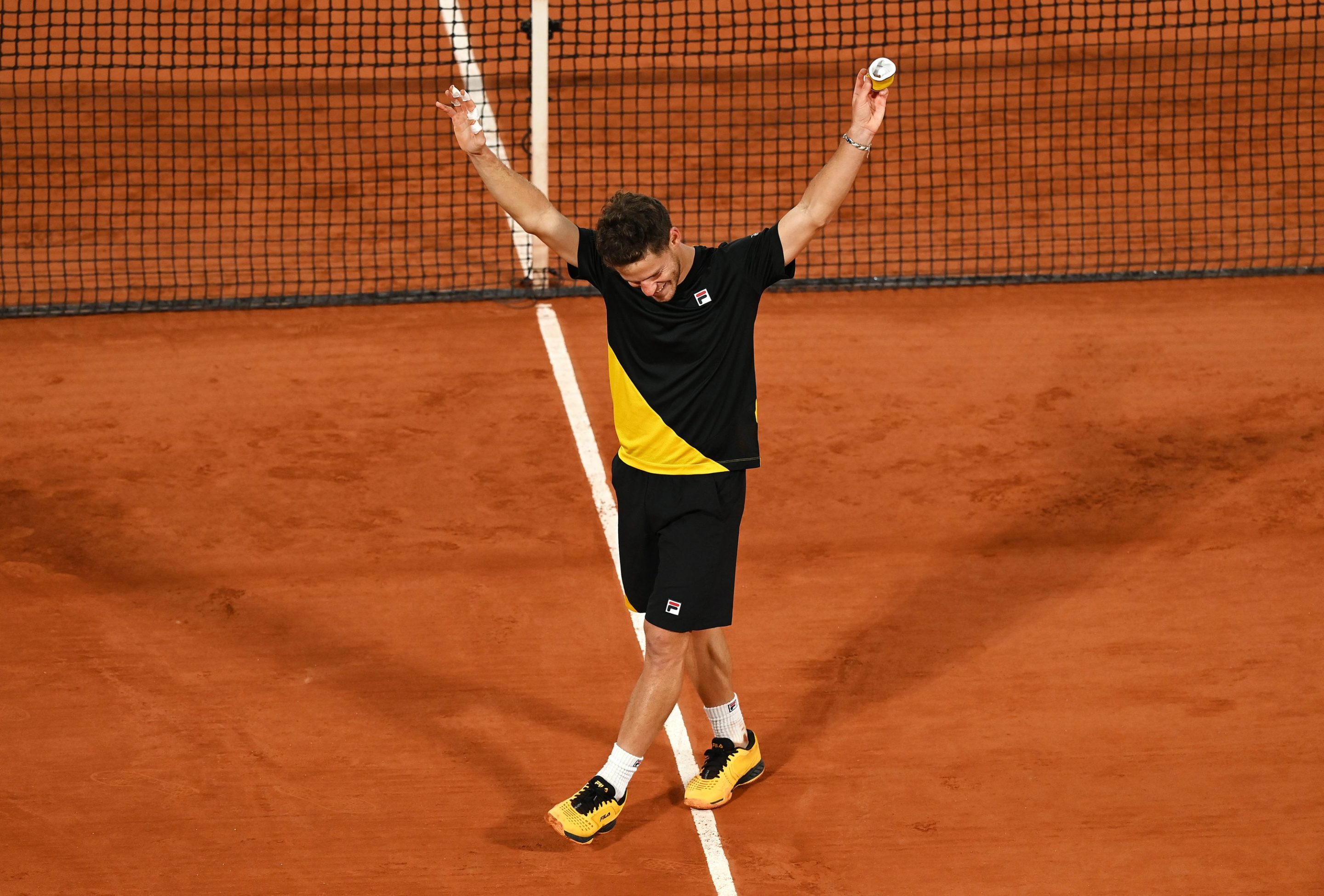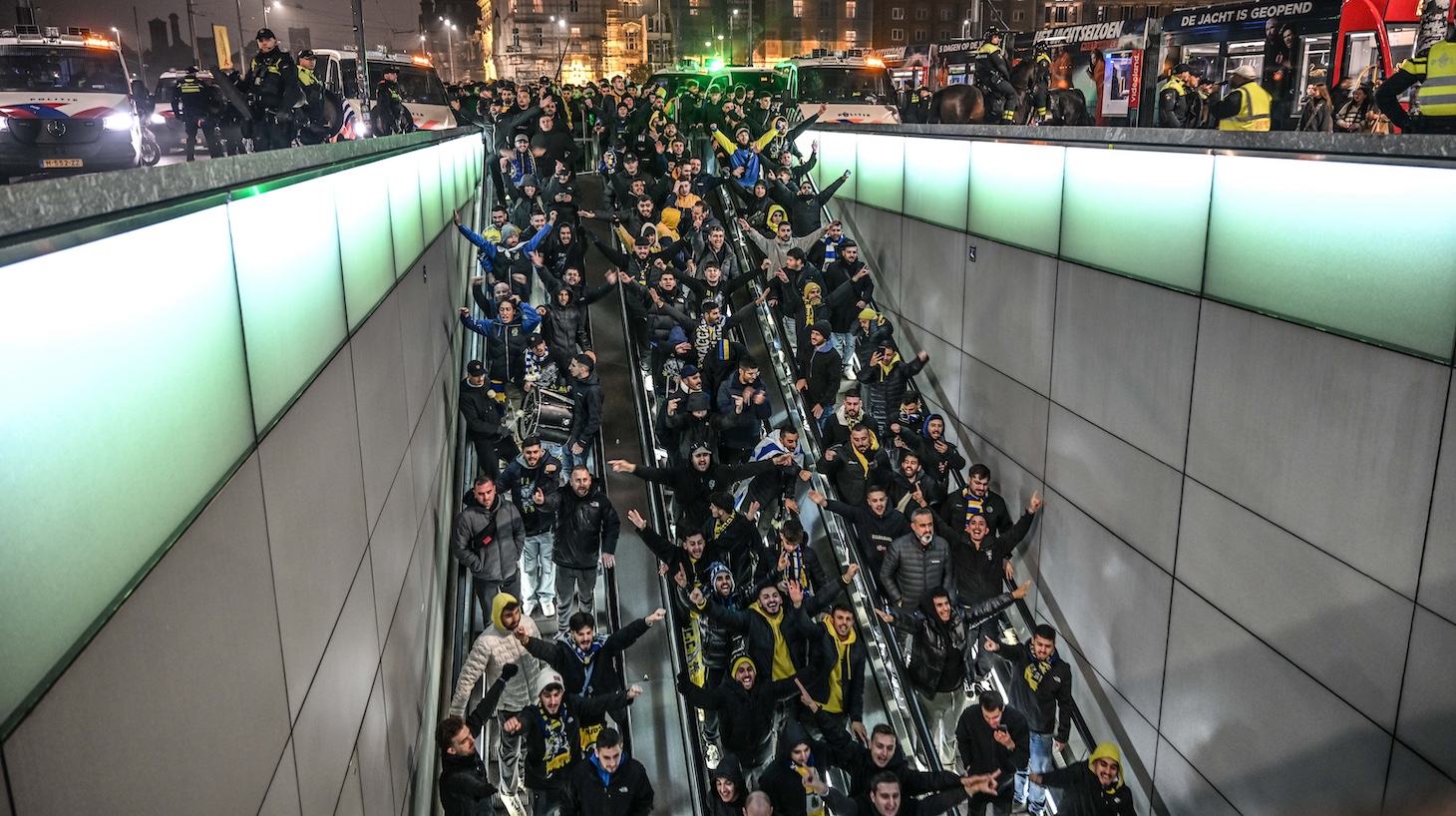The short king lives. It took five hours and eight minutes—some two hours longer than it would've had he seized some earlier opportunities—but Diego Schwartzman closed out Dominic Thiem in five sets in their French Open quarterfinal Tuesday. If Schwartzman's career is a study in incremental victories over overwhelming odds, then beating the defending major champ on his favorite surface is a fitting next step. The 7-6(1), 5-7, 6-7(6), 7-6(5), 6-2 victory put Schwartzman in his first major semifinal, and with nine wins over his last 10 matches, including two over top-three players, he's enjoying the hottest stretch of his career.
Schwartzman will be content with the final result, but there were patches of that match that he'll have to expunge from his memory to keep going. In the second set, he was returning at 4-5, 15-30, and had an easy forehand to put away that would've given him two set points. The ball went directly into the net cord and he went on to lose the set. In the third, Schwartzman was up 5-3 and serving; he hit four straight errors, lost the set point he had in the next return game, and eventually fumbled the set. At peak frustration, he would flop a limp hand in the direction of the net, like he was done with hitting a ball over it and ready to dive into some online coursework. All the usual nerves could be blamed, but it was also a reminder that Schwartzman can never take a service game for granted the way other top players can. When the clay is playing as slow as it is in these anomalous, cold, and wet October conditions, his weak serve merely starts a point that he must then fight to win.
Fortunately for Schwartzman, his close pal and world No. 3 Thiem was winding down a severe endurance test. On Sept. 13, Thiem won his first major title at the U.S. Open, by the end of which, you may remember, he was on the verge of dissolving into a puddle of stress vomit. After playing those seven matches, the undead 2020 calendar gave Thiem only two weeks off before he played his first French Open match on Sept. 28. He has been to the finals here the last two years, but the tight turnaround, tricky draw, and grueling conditions took a toll on his legs. His fourth-round opponent, the world No. 239 Hugo Gaston, went at Thiem's legs straightforwardly and mercilessly by making him chase down 55 drop shots over the course of their five-setter, and winning 40 of those points. Thiem survived that war of attrition but came into his quarterfinal against Schwartzman noticeably depleted, even though he was able to flick it back on at pivotal moments late in the third and fourth sets.
At their best, Schwartzman and Thiem are two of the best clay players on the planet, both capable of hitting the ball dead and covering court with fluidity. This match was mostly a humid rockfight. Here's a wild, illustrative stat: 32 percent of points in this match lasted over nine shots, per the tournament stat tracker. There were enough 20-shot rallies for this to begin to feel like the normal flow of things, which is not remotely true of men's tennis. During the second set, Schwartzman dug out of a 0-40 hole to win a 15-minute, 22-point service game. This was noteworthy in that some whole sets take that long, and also that Schwartzman had not previously come back to win a 0-40 service game in 18 tries this season. In ways big and small, he is once again pulling off the unlikely.
Looking back, our profile of Schwartzman last week was deficient in at least one department: I called his tour-official height into question, but did not offer my own estimate of his height. He is no taller than 5-foot-5; I have stood next to him long enough to know. Listing him at 5-foot-7 does a disservice to his genius, if anything. After this Open, he will be in the top 10. Over the last few weeks, Diego Schwartzman has reached the highest tiers of his profession, beating its best players, without benefiting from any of its easy points. This king leaves no option but to bow down.





